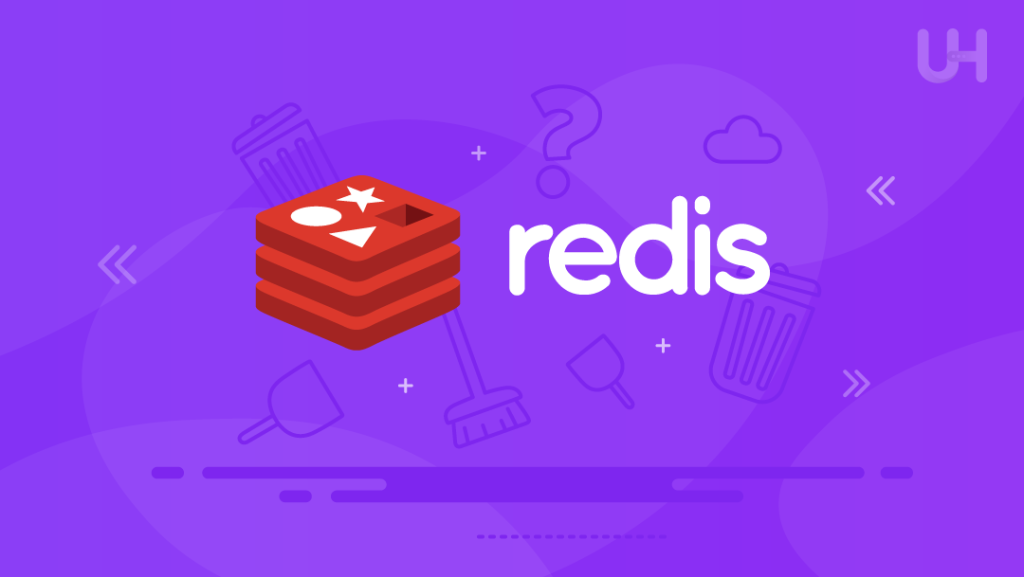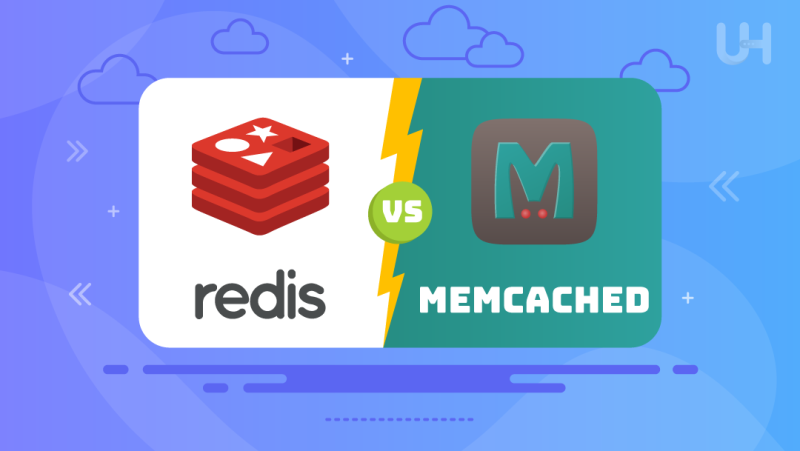Efficient caching is essential for creating scalable and high-performance applications. Among the most prominent caching solutions available are Redis vs Memcached, each providing unique benefits tailored to different use cases. Understanding the strengths of these two options can help developers make informed decisions when optimizing their applications.
In this article, we will aim to provide a comparison of Redis vs Memcached, guiding you in selecting the most suitable option for your application’s requirements.
Introduction to Caching
Caching is an important technique for temporarily storing frequently accessed data in memory, which helps decrease the frequency of database queries. This approach enhances data retrieval speed, reduces network latency, and significantly improves the overall user experience. Two prominent tools for website caching are Redis and Memcached. While both provide robust features for caching, they have distinct differences in their implementation, capabilities, and optimal use cases.
What Is Redis?
Redis, which stands for Remote Dictionary Server, is a powerful open-source key-value store that operates in memory. This versatile database management system is recognized for its support of various data structures, including strings, hashes, lists, sets, and sorted sets. Its flexibility and performance make Redis a popular choice for applications that require rapid data retrieval and manipulation.
Key Features of Redis
Redis as a cache is a powerful in-memory data structure store that offers several key features, making it an excellent choice for various applications. Here are some key features of Redis:
- Data Persistence: One of its standout attributes is data persistence, which ensures that data remains intact even after system reboots, setting it apart from traditional caching solutions.
- Advanced Data Types: Redis also supports advanced data types, allowing the management and manipulation of complex data structures for more sophisticated use cases.
- High Availability: Redis provides high availability through features like data replication and server clustering, enhancing its reliability for critical applications.
- Use Cases: The common use cases for Redis include real-time analytics, leaderboard rankings, session storage, and messaging systems.
Overall, Redis is an ideal solution for applications that require both advanced data operations and persistent storage capabilities.
What Is Memcached?
Memcached is a powerful distributed memory object caching system that prioritizes high performance and efficiency. It is designed to facilitate rapid data retrieval by storing information in a key-value format, making it simple and fast to use. This system is particularly beneficial for applications that require quick access to frequently used data.
Key Features of Memcached
As we know Memcached is a fast system that stores data in memory to improve performance. Let’s dive into it’s key features.
- Ease of Use: Memcached is designed to be lightweight and easy to deploy, allowing for quick implementation in various environments.
- Focus on Speed: This caching solution is optimized for read-heavy workloads, providing minimal latency and ensuring fast data retrieval.
- Scalability: Memcached is particularly well-suited for applications requiring horizontal scaling, efficiently accommodating increased loads.
- Use Cases: Common applications include caching database query results, storing Application Programming Interface responses, and managing temporary objects to enhance performance.
Overall, Memcached is often the preferred choice for straightforward caching needs, where performance and simplicity are critical considerations.
Comparing Redis vs Memcached
Below is a quick comparison of Redis vs Memcached to highlight their differences:
| Feature | Redis | Memcached |
| Data Structures | Strings, hashes, lists, sets, and more | Strings only |
| Persistence | Supports RDB and AOF persistence | No persistence |
| Replication | Built-in replication and clustering | No native support |
| Performance | Slightly slower due to advanced features | Extremely fast for simple operations |
| Scalability | Built-in clustering for horizontal scaling | Relies on external solutions for scaling |
| Memory Management | Efficient use of eviction policies | Basic memory management with no eviction policies |
When to Use Redis or Memcached?
When deciding between Redis vs Memcached, it’s important to consider your specific needs and use cases:
Redis is ideal if your application requires data persistence and benefits from advanced data structures. It boosts application performance with a 10Gbps fast server and excels in scenarios where high availability and clustering are essential. Common use cases for Redis include pub/sub messaging systems, task queues, and analytics applications.
On the other hand, Memcached is best suited for creating a straightforward caching layer, particularly for read-heavy workloads. If your top priorities are latency and speed, and your data fits well into a key-value format, Memcached is a solid option. While it supports scalability, it is particularly effective for simpler, more direct workloads.
Enhance Your App’s Performance with NVMe VPS!
Boost the performance of Redis and Memcached with UltaHost’s NVMe VPS Hosting. Experience unmatched speed, low latency, and reliability, ensuring your caching solutions operate efficiently.
Integration with Hosting Environments
Caching solutions like Redis and Memcached are highly effective when integrated with strong website hosting solutions that offer the necessary computational power and memory resources to achieve optimal performance from caching. Additionally, virtual server hosting solutions provide low latency and enhanced reliability, further supporting efficient caching mechanisms.
Benefits of Using Caching Solutions
Selecting the appropriate hosting environment is crucial when deciding between Redis and Memcached for your caching needs. Reliable hosting platforms like Cheap VPS Solutions provide specialized solutions to enhance caching efficiency. These hosting packages are optimized for high performance, ensuring that cached data is delivered quickly and efficiently to users.
Redis and Memcached: Performance Insights

Here are three significant insights to differentiate between Redis and Memcached on the basis of their performance:
Latency and Throughput
In terms of latency and throughput, Redis exhibits slightly higher latency due to its comprehensive feature set and flexibility. In contrast, Memcached stands out for its exceptional speed, making it an ideal choice for simple caching scenarios.
Resource Utilization
Redis excels in memory management thanks to its built-in features, such as LRU (Least Recently Used) eviction, which allows for effective resource allocation. On the other hand, while Memcached is known for its lightweight architecture, it lacks advanced memory management capabilities.
Horizontal Scaling
When it comes to horizontal scaling, Redis offers robust and native clustering options, making it easier to manage larger datasets. Conversely, Memcached relies on application-layer scaling strategies, which may require additional complexity in implementation.
Memcached vs Redis: Which One To Choose?
Redis and Memcached are two prominent options when considering which data store to utilize. The choice between them largely hinges on your application’s specific needs, including factors such as data structure support, requirements for data persistence, performance metrics, and scalability.
Both Redis and Memcached are open-source, in-memory data stores primarily used for caching, but they each offer unique features and are suited for different use cases. Redis, for example, provides a richer set of data structures and supports persistence, whereas Memcached is known for its simplicity and superior performance in straightforward caching scenarios.
In summary, the decision to choose either Redis or Memcached should be made by carefully weighing your project’s requirements against each tool’s strengths and limitations. Both solutions are highly effective and can successfully serve a range of applications.
Conclusion
Choosing between Redis and Memcached depends on your application’s unique needs. Redis’s versatility, persistence, and support for complex data structures make it ideal for dynamic and feature-rich use cases. On the other hand, Memcached delivers unparalleled speed and simplicity, excelling in straightforward, read-heavy workloads.
Evaluate your application’s caching requirements, performance priorities, and scalability needs to make an informed decision. Both tools are robust solutions that can significantly enhance application performance when paired with the right hosting infrastructure. With Redis or Memcached, you’ll be well-equipped to build a fast, scalable, and responsive system.
Pairing Redis or Memcached with UltaHost’s Cloudflare server boosts performance and security. With Cloudflare and UltaHost’s reliable infrastructure, you can enjoy seamless caching and enhanced protection.
FAQ
What is the primary difference between Redis and Memcached?
Redis supports advanced data structures and persistence, while Memcached is simpler and optimized for speed.
Can Redis replace Memcached?
Due to its broader feature set, Redis can replace Memcached, but Memcached is still faster for basic caching.
Is Memcached free to use?
Yes, Memcached is open-source and free to use, similar to Redis.
Which caching solution is better for session management?
Redis is better for session management due to its data persistence and replication capabilities.
How do I choose between Redis and Memcached for eCommerce?
Redis is preferable for eCommerce because it handles complex operations and persistent storage.
Are Redis and Memcached compatible with cloud hosting?
Yes, both work well with cloud hosting environments like Cloud VPS Hosting.
What hosting solution is recommended for caching?
For optimal caching performance, use Dedicated or VPS Hosting with ample memory.










